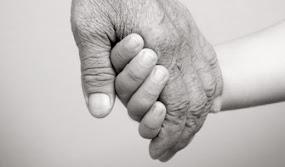 Dear readers:
Dear readers:We wish you all a happy holiday season and a Happy New year, in many interesting languages:
Happy New Year
聖誕快樂 新年快樂
 Dear readers:
Dear readers:
 By
Madeleine Kando
By
Madeleine Kando
 By
Madeleine Kando
By
Madeleine Kando
Tom Kando
I continue to fret about the war in Ukraine. I worry about Putin's nuclear saber rattling.
All the pundits keep reassuring us that this is mere bluff and that there is very little chance of this war escalating into nuclear Armageddon. Most of us don't have sleepless nights worrying about the possibility of nuclear war. Many of us did, during the Cuban missile crisis, but not now.
1. The probability of a bad event happening should be inverse to how terrible the event is likely to be. Put differently, the greater a risk is, the smaller the probability of failure, when taking that risk, should be.
For example, it is possible that I will catch a cold this winter. If a doctor told me that there is a probability of .33 (one out of three) of this happening, I will not worry very much. On the other hand, if someone told me that there is a .003 probability of nuclear war in the coming six months (one out of 300), I would worry quite a bit.
In other words, the greater a possible upcoming catastrophe is, the closer to zero its probable occurrence should be.
I have no idea whether there exists a negative correlation between how terrible an event is and how likely it is to happen.
One important aspect is the time frame: Is the bad thing likely to happen soon or in the distant future? The catastrophes which Hollywood likes so much - giant earthbound asteroids, devastating earthquakes, etc. - have the advantage of following geological and astronomical timetables. We don't worry about them, in the belief that they only occur once in a million years. What about global warming - the destruction of the planet? This may be the worst thing that can happen to us, and its likelihood is quite high. But it is happening gradually. We are the slowly boiling frog. By
Madeleine Kando
By
Madeleine Kando 

 |
| Dr. Theodore von Karman |

 By Madeleine Kando
By Madeleine Kando By
Madeleine Kando
By
Madeleine Kando As we huff and puff our way back, uphill this time, a red dust covered pickup passes us. In the cargo bed, we see a dead bloody wild boar, with his legs dangling over the side. Well, this is a hunter’s trail after all. It wasn’t put there for the benefit of soft-hearted tourists from Boston.
As we huff and puff our way back, uphill this time, a red dust covered pickup passes us. In the cargo bed, we see a dead bloody wild boar, with his legs dangling over the side. Well, this is a hunter’s trail after all. It wasn’t put there for the benefit of soft-hearted tourists from Boston.
 By
Madeleine Kando
By
Madeleine Kando Tom Kando
Tom Kando  By
Madeleine Kando
By
Madeleine Kando
Tom Kando
My previous post's title was: It's the Guns, Stupid.
I subsequently thought: There is a simple way to prove this: Just draw up a list of places, list two variables for each place, namely (1) per capita gun ownership and (2) per capita murders, and see if there is a correlation between the two. For example, one could use a list of our 50 states for this or a list of the world's roughly 200 countries.
There
is anecdotal and journalistic evidence
that states and countries with high rates of gun ownership also have high murder
rates (e.g. Texas vs. Massachusetts, or the US vs, Holland). But I can't think of any systematic attempt to correlate the two
variables, using a list of states or countries. So I did it myself. It was
quite simple. I chose to list countries rather than US states. To make it
easier on myself I reduced the population to 45 Aimportant@ countries. I then listed each country's
rate of gun ownership and its murder rate. This produced a bi-variate 2x2 table, on
which I did a Chi Square significance test.
Of the 45 countries in my sample, 25 were Ahigh gun ownership@ and 20 were Alow gun ownership@ Of the same 45 countries, 17 were Ahigh murder rate@ and 28 were Alow murder rate. The table below gives the distribution of the 45 countries into 4 cells, as indicated:
|
|
|
|||
|
|
|
|
||
|
|
|
|
|
|
|
|
|
|
|
|
|
|
|
|
|
|
 By
Madeleine Kando
By
Madeleine Kando by Madeleine Kando
by Madeleine Kando Tom Kando
Tom Kando  Tom Kando
Tom Kando  by Madeleine Kando
by Madeleine Kando